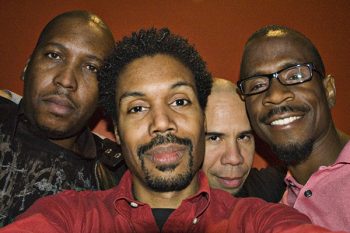Words used to describe facial expressions in Indonesian Posted by asimonoff on Oct 31, 2016 in Uncategorized
The ability to catch someone’s facial expressions is important to building an effective communication. Though nothing is said verbally, there is much to be understood about the messages we send and receive through the use of this nonverbal communication. Facial expressions are important parts of how we communicate and how we develop impressions of the people around us. They are may be one of the only universal language.
Through it, we will be able to find out whether your speaking partner is interested in or offended by your topic of conversation or proposal. Knowing this firsthand, you would be able to do a quick damage control by apologizing to your speaking partner or steering away from a topic that he/she considers offensive.
However, the most important thing is how someone reads the first impression about you when you meet for the first time. It does not hurt, though, to force yourself to be friendly or show a happy face. Everyone knows that we shouldn’t ‘judge a book by its cover’, but unfortunately, that is exactly what we all do, intentionally or not, consciously or not; within the first 39 milliseconds of meeting someone, we have formed our first impressions (Bar, Neta, Linz, 2006 Very First Impressions, Emotion 6 (2): 269-278).

image: Malik ML Williams/flickr.com/all creative commons
First impressions from facial expressions (Bahasa Indonesia – English)
| Bahasa Indonesia | English | |
| 1. | baik hati | 1. kind-hearted |
| 2. | ramah | 2. friendly |
| 3. | imut | 3. cute |
| 4. | mukanya lugu | 4. innocent face |
| 5. | judes | 5. bitchy |
| 6. | mukanya kecut | 6. resting bitch face; unfriendly face |
| 7. | pemarah | 7. hot-tempered |
| 8. | galak | 8. stirn; fierce |
| 9. | kejam | 9. cruel |
| 10. | bengis | 10. violent; devlisih |
Then, as you further engage in the conversations, you will also recognize facial expressions as the following:
Facial Expressions (English – Bahasa Indonesia)
| English | Bahasa Indonesia | |
| 1. | grinning | 1. cengengesan; cengar-cengir |
| 2. | grin | 2. nyengir |
| 3. | beaming | 3. cerah |
| 4. | smiling to yourself | 4. tersenyum-senyum sendiri |
| 5. | happy; upbeat | 5. gembira |
| 6 | a quizzical look | 6. muka bertanya-tanya |
| 7. | suspiscous | 7. kelihatan curiga |
| 8. | pouting | 8. cemberut |
| 9. | winced | 9. meringis |
| 10. | sad; long face | 10. mukanya sedih; kelihatan sedih |
| 11. | looked guilty | 11. kelihatan bersalah |
| 12. | forced smile; bitter smile | 12. tersenyum kecut |
| 13. | annoyed | 13. kelihatan kesal |
| 14. | dirty look; frown | 14. melihat dengan marah; mengerut |
| 15. | dumbfounded | 15. tercengang |
| 16. | brooding | 16. kelihatan sedang berpikir keras |
| 17. | angry | 17. kelihatan marah; mukanya marah |
| 18. | disappointed | 18. kelihatan kecewa |
| 19. | glazed over; bored appearance | 19. kelihatan bosan |
| 20. | look empty; blank; deadpan | 20. kosong |
| 21. | unreadable | 21. ekspresi mukanya tdk terbaca |
How can you convey your understanding of facial expressions to others?
- Use the word ‘muka’ (face) before words describing emotional states.
– Mukanya sedih (He looks sad.), or
- Use ‘kelihatannya’ (it seems like) before words describing emotional states.
– Kelihatannya kamu gembira sekali hari ini (It seems like you are very happy today.)
– Kelihatannya dia bosan. (It seems like he is bored.)
- Ask questions or make statements.
– Kok kelihatannya sedih. (Hmm, you look sad.)
– Mengapa/kenapa sedih? (Why do you look sad?)

image: Donnie Ray Jones/flickr.com/commercial used and mods allowed
LET’S PRACTICE. Make statements and questions using the above facial expressions.
- Your friend looked upset. What are you going to say to him/her?
- You see your brother/sister is grinning when he/she comes home. What are you going to say?
- Write as many sentences as you want. Let’s discuss them together.

Build vocabulary, practice pronunciation, and more with Transparent Language Online. Available anytime, anywhere, on any device.
About the Author: asimonoff
I’m an Indonesian language instructor, instructional material developer, reading test developer, and interpreter. I have been teaching Indonesian to adult students for 15 years, and have been teaching students from many backgrounds, such as private, military and diplomatic service employees. I’m Indonesian, but am living in the US now; my exposure to different cultures in my home country and in the US has enriched my knowledge in teaching Indonesian as a second language. I approach the teaching of the Indonesian language by developing students’ critical cultural awareness and competence. This method of teaching has been proven to be a key to the success of my students. Students become conscious of the essential role culture plays in the language.



